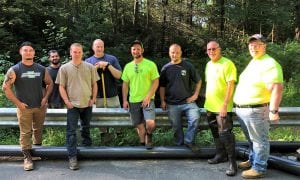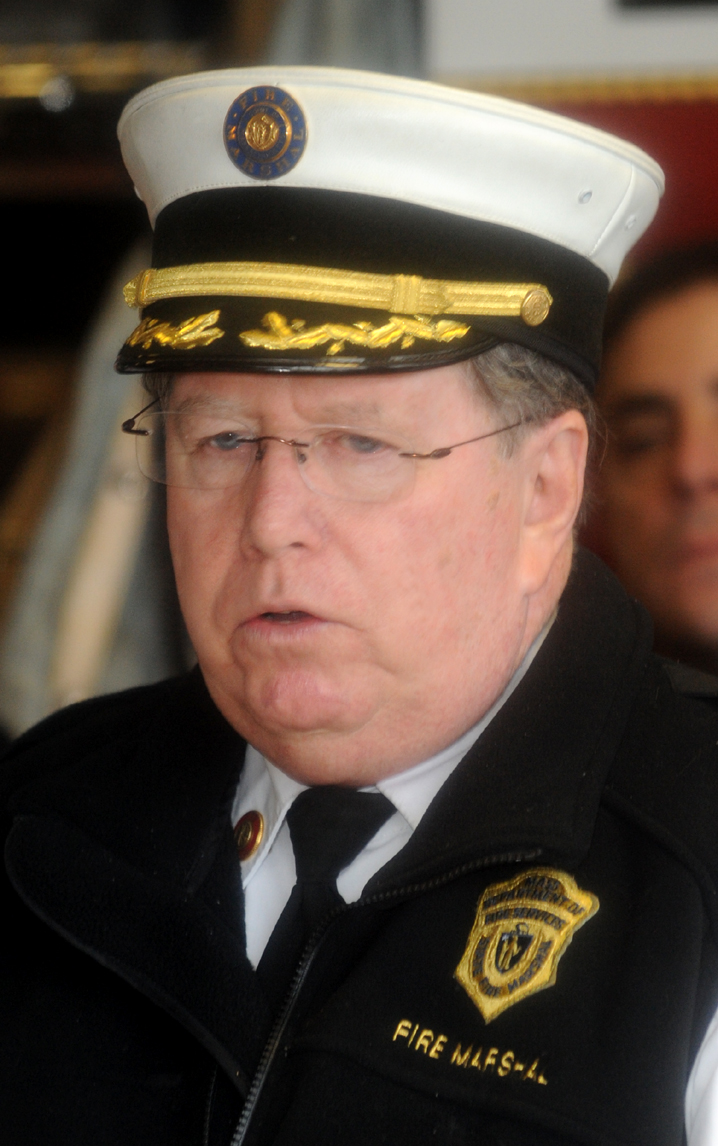WESTFIELD – A Sylvan Lane resident who inadvertently sparked a fire under his sink while attempting to thaw a frozen pipe might have avoided damage to his home if he had known about – and heeded – recent advice from Massachusetts Fire Marshal Stephen Coan.
City firefighters responded to a Sylvan Lane address Saturday after a resident reported that insulation had ignited while he was attempting to thaw pipes with a torch. Although the man extinguished the fire before firefighters arrived, smoke permeated the house and the kitchen suffered damage when firefighters opened up the floor and ceiling to ensure the fire had not spread.
Coan’s advice for dealing with frozen pipes is that a frozen pipe should be suspected if only a trickle comes from a faucet when it is opened and it is located in a place for pipes likely to freeze – such as pipes installed along exterior walls or where water service enters a residence through the foundation.
If a frozen pipe is found, the fire marshal’s advice is “do not use a blowtorch, kerosene or propane heater, charcoal stove or other open flame device” to thaw the pipe.
He points out that, in addition to fire hazards posed by an open flame, a torch can not only melt ice in a pipe but can also cause the melted ice to boil, creating an explosion danger in the pipe.
An open flame can also risk generating carbon monoxide, a lethal gas, Coan reminds residents. He urges that carbon monoxide and smoke detectors be standard items in all homes in the Commonwealth.
Instead of using a torch, Coan suggests that heat to a frozen pipe may be applied by “using an electric heating pad wrapped around the pipe, an electric hair dryer, or (by) wrapping pipes with towels soaked in hot water.”
He said that faucets should be left open when efforts to thaw pipes are underway as, when a frozen area begins to melt, water which begins to flow through the frozen area will accelerate the melting of ice in the pipe.
Heat should continue to be applied, he advises, until full water pressure is recovered and all faucets should be checked to ensure that all frozen pipes are identified.
Caution should also be exercised, Coan urges, when using an electrical space heater to warm an area with frozen pipes, as electrical wires, especially those in extension cords, can be easily overloaded by heaters which typically draw much more power than lights or other appliances.
Coan offers tips to prevent pipes from freezing in the first place and suggests that faucets be allowed to drip when frozen pipes are a danger since flowing water, even water barely flowing, is much harder to freeze than water trapped in a pipe.
In addition, Coan suggests the kitchen and bathroom cabinet doors be left open to expose plumbing to circulating air but he also urges that any toxic household items which might be thus exposed should be safeguarded from children.
Coan said that the risk of frozen pipes can also be lessened if the urge for heating economy can be temporarily suppressed and the thermostat not be reset lower when residents retire for the night, times when pipes are likely to freeze.
He suggests residents who leave home during cold weather should leave the heat on in their homes with their thermostats set no lower than 55 degrees.





